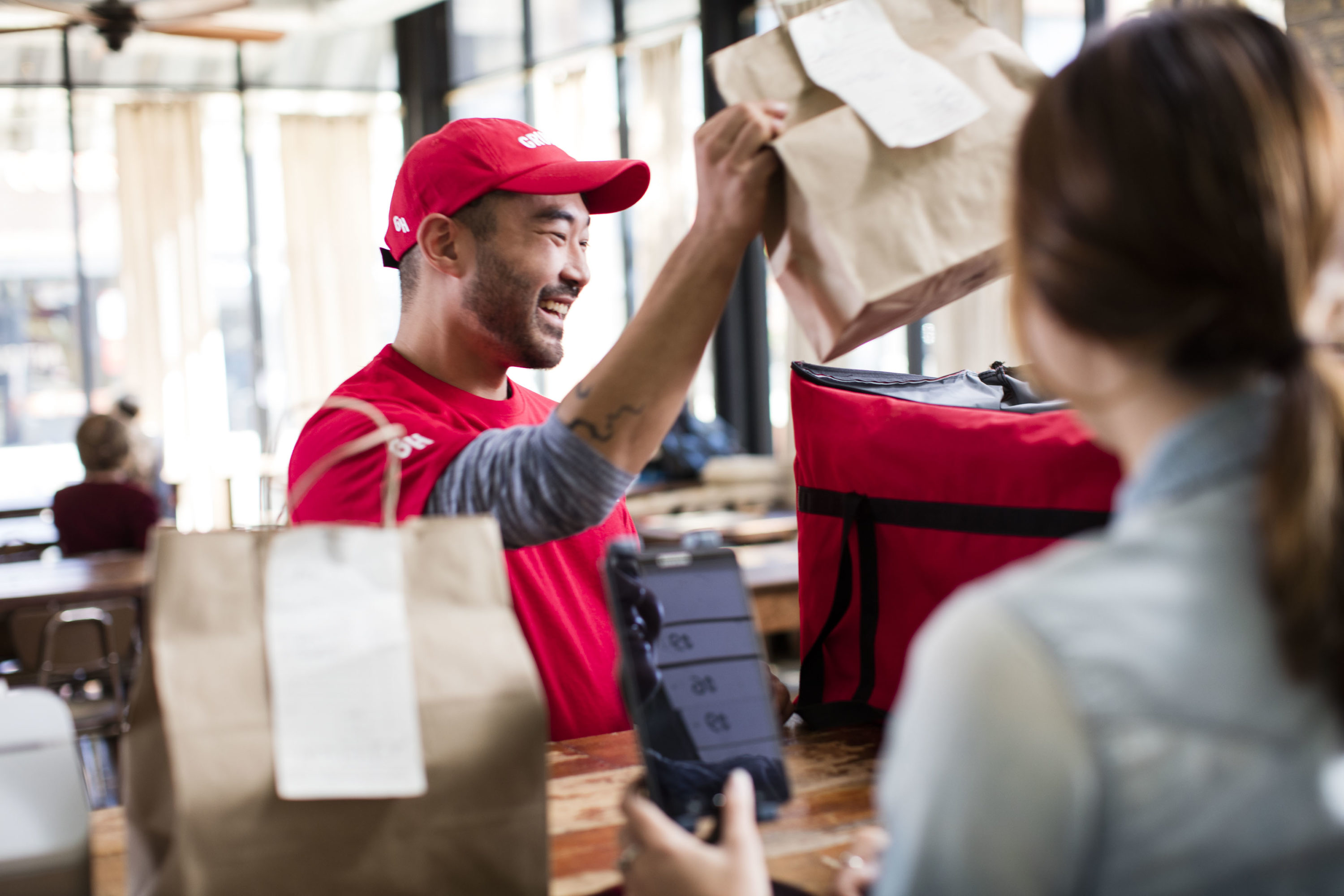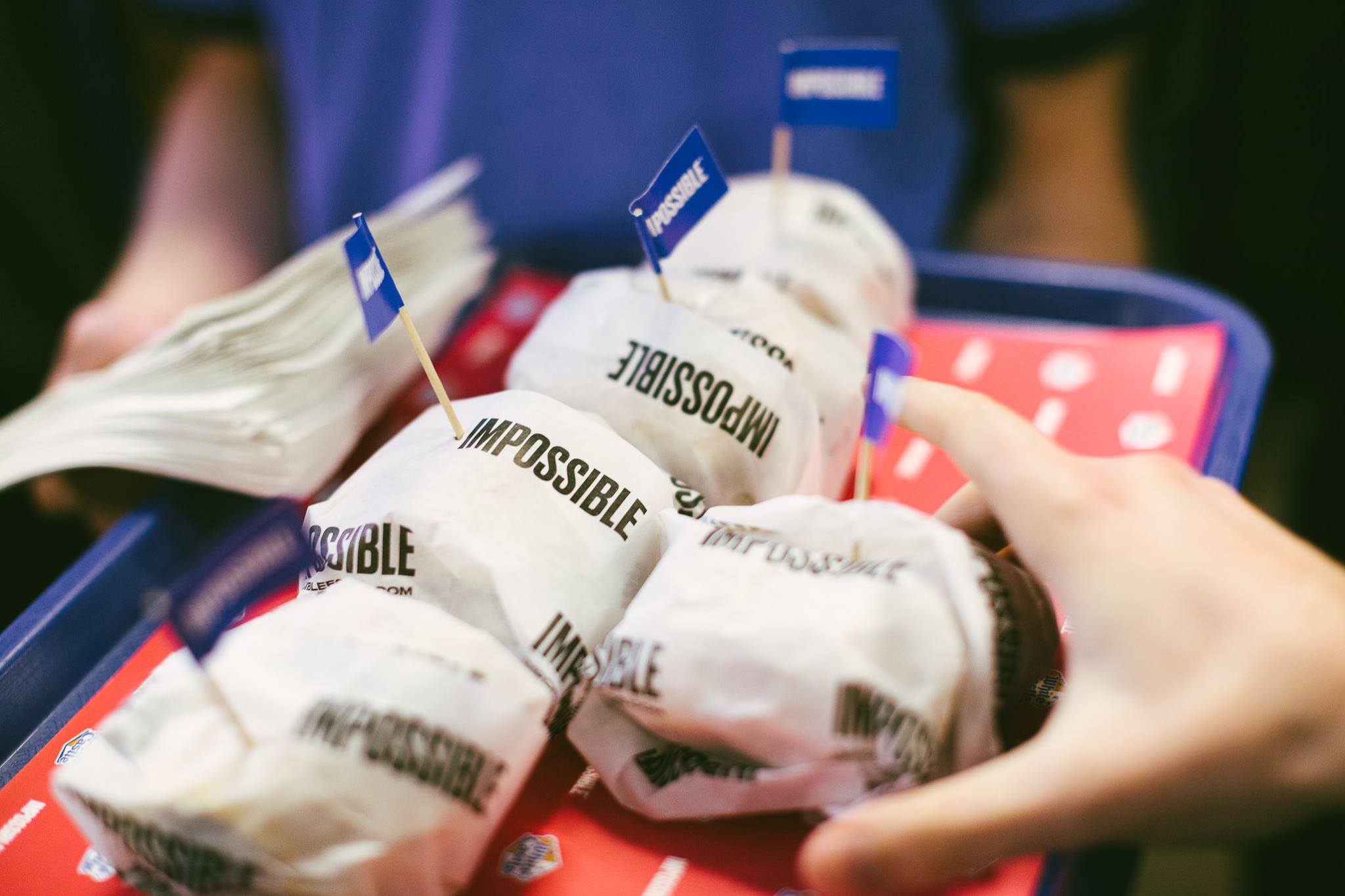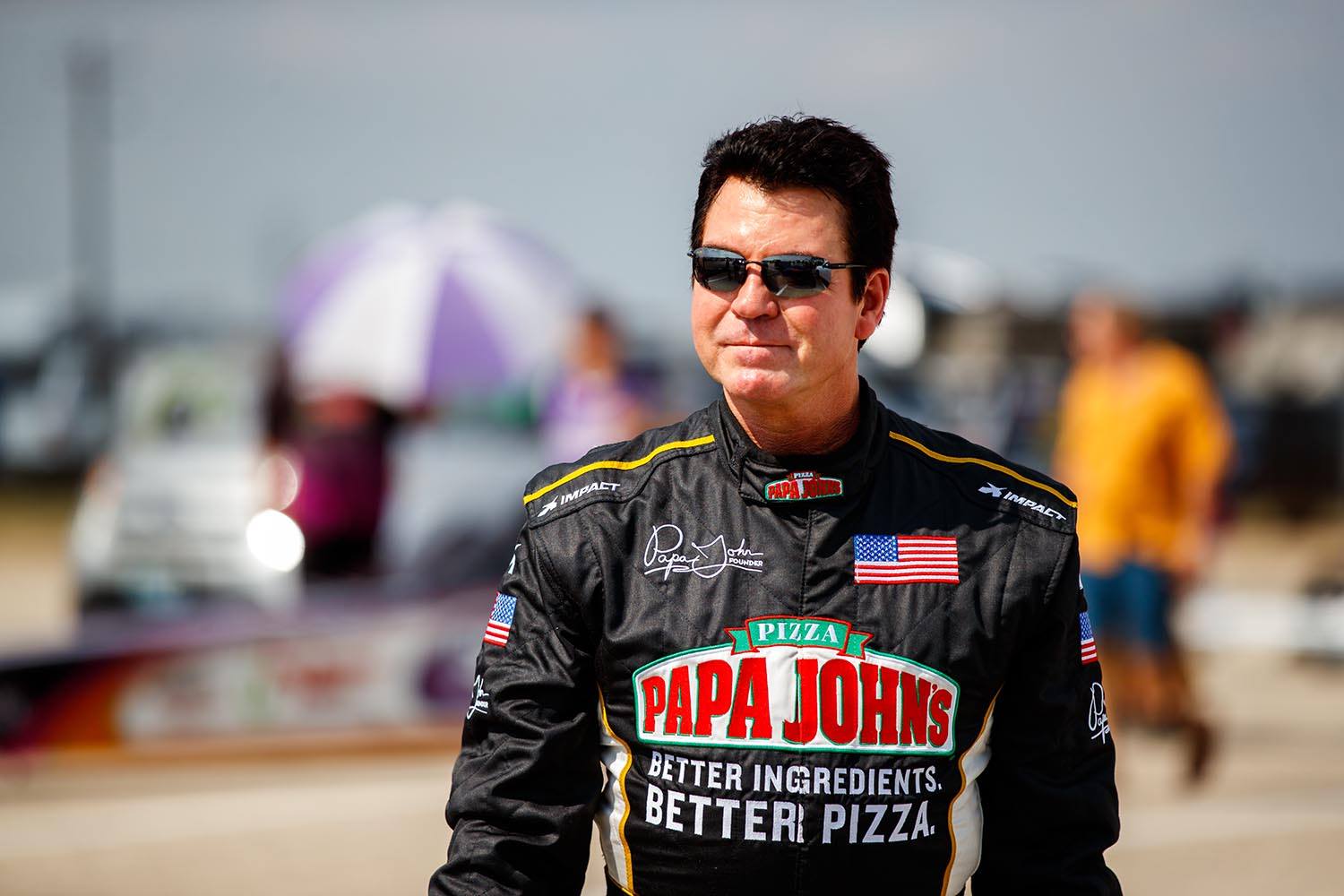11 Moments That Mattered for the Restaurant Industry in 2018
Skift Take
From mergers to leadership changes to loss, 2018 was filled with news that kept us on our toes. Here are the stories that had the biggest impact.
At Skift we like to think that a year is sandwiched between our Megatrends projections that we publish in January and our Moments That Mattered wrap ups in December. Anything in the middle is either reinforcement or material.
This is the first year that we're doing the latter for Skift Table, so we're going to have fun. But we're also going to be informative (sorry, if that's a buzzkill). The Megatrends we started covering at the beginning of the year have turned into narratives that we have followed throughout the year.
Cashless restaurants? On them. Sustainability? So there. Social media creativity? We see you IRL.
For our Moments That Mattered 2018, we look at news events across the industry that meant something more that just the news peg. Sure, the ongoing implosion of Papa John's was worth a click multiple days a week, but it was also about over-investing in founders, poor marketing choices, and bad franchisee relationships. The deal between Yum and a big delivery service was about a mutually beneficial relationship that gave each party exactly what they needed. We explore the bigger issues in the nine other moments we picked.
Nacho Fries Start Value Menu Arms Race
January
Why It Mattered:
Value menus are a cheap way to please return guests, but they set unreasonable expectations for consumers and can hurt franchisees — especially in a year where money is tight because of labor costs and renovations.

Taco Bell's insanely popular Nacho Fries. Photo: Yum Brands.
Taco Bell began a long-rumored cheap eats arms race in January with a menu buoyed by Nacho Fries, which soon became its most popular limited time only offer ever. McDonald's made a return to the Dollar Menu in the same month, much to the consternation of its operators who feared that discounts wouldn't be justified by increased business or the potential for upselling.
But these menus just aren't always sustainable in the current environment, if they ever were. By summer Jack in the Box gave up on its brand new value menu and tacked 30 cents on to its 99 cent items, citing the cost of labor in California. Demand stalled at McDonald's, Burger King, and Wendy's in the third quarter, despite the deals.
On the other hand, if the menu item is just right, even dirt cheap menu doesn't always hurt. Taco Bell grew its market share over its rivals, displacing Burger King as the number four restaurant chain. It is also revamping its value menu, rebranding it as a "cravings" menu with multiple $1 items. And the Nacho Fries? They will return.
Read More
As Fast Food Price Wars Heat up, New Menu Items Set the Tone
For Fast Food Chains, Are Value Menus Worth It?
Taco Bell Is Now the Fourth-Largest Restaurant Chain in the U.S.
Grubhub and Yum! Brands Partnership
February
Why It Mattered:
The deal adds to a long trend of chain and third-party delivery partnerships over the last year, as companies like Grubhub and its competitors DoorDash and Uber Eats continue to eat up market share.

A Grubhub delivery person in a promotional photo from the company. Photo: Grubhub.
Uber Eats has an exclusive partnership with McDonald's, DoorDash has a similar deal with Wendy's, and early this year, Grubhub announced its own agreement with Yum! Brands.
On a recent earnings call, GrubHub highlighted its growing need to partner with restaurant groups to more easily enter smaller markets where chains make up the bulk of local offerings.
The deal has greatly benefited both sides so far. In addition to operating in more cities, Grubhub earned a $200 million investment from the parent company of Taco Bell, KFC, and Pizza Hut.
Meanwhile, Both Taco Bell and KFC franchisees have improved on delivery distribution, while skipping out on fees GrubHub instead charges consumers for. Pizza Hut, the lone Yum! Brands subsidiary not on GrubHub's platform, has opted to stick to its own proprietary delivery channel for now.
Read More
YUM's Choice of GrubHub as Its Official Delivery Partner Comes With a $200 million
Investment
YUM Brands! Franchisees Don't Pay Delivery Fees Thanks to GrubHub
Chipotle Taps Taco Bell for Leadership and Direction
February
Why It Mattered:
After years of menu misses, foodborne illness outbreaks, and declining sales, Chipotle badly needed a refresh. To find the people to craft its turnaround, it turned not to upscale fast casual chains emulating what Chipotle pioneered in the 1990's, but to the fast food competition that it used to scoff at a decade ago.

Chipotle CEO Brian Niccol. Photo: Associated Press.
It wasn't that long ago that Taco Bell was the giant Mexican-ish chain generating all the terrible headlines, but, at Chipotle, what a difference a couple of years of mismanagement and an embarrassing string of food illness outbreaks can make. When Brian Niccol, the executive credited with masterminding Taco Bell's jolt into relevancy, was tapped to replace Chipotle founder and CEO Steve Ells, it signaled that Chipotle wanted the same kind of flashy brand refresh in its own house.
Within months of Niccol arriving at Chipotle, the housecleaning began. He slammed the brand as invisible, shut down both Chipotle's Denver headquarters (where the company was founded in 1993) and corporate offices in New York, moved executive leadership to Newport Beach, California (where Taco Bell's headquarters are located), and kept a secondary corporate office open in Columbus, Ohio. Over 400 corporate employees were either relocated or laid off in the process.
Throughout the rest of the year, glimpses at new direction came through in the form of new menu releases, a comprehensive new advertising campaign led by another Taco Bell alum, and a strong partnership with DoorDash to support Chipotle's digital innovations. But there was also another food illness outbreak that dominated far more headlines than Chipotle's 'For Real' marketing campaign.
Niccol needs some slam-dunk wins to prove that Chipotle is indeed experiencing a turnaround, and it hasn't happened yet. To be fair, though, it's only been 10 months and he just finished shoring up his leadership bench. Now, investors are ready to start seeing the returns.
Read More
Chipotle Is Tired of Being Behind on Digital Strategy
Chipotle's Revised Strategy: Closing Stores and Launching Loyalty
Chipotle's ‘For Real' Marketing Campaign Needs to Grab Attention
Impossible Burger Goes Mainstream at White Castle
April
Why It Mattered:
This partnership is a perfect lens for what has happened to plant-based protein in America. No longer relegated to off-menu substitutes, the new wave of fake meat startups are marketed for everybody: meat eaters, vegetarians, and vegans alike.

Impossible Burgers at a White Castle event. Photo: White Castle/Facebook.
White Castle initiated a partnership with Impossible Foods in April to test the demand for plant-based protein, and five months later, Impossible Slider sales were so high that White Castle decided to roll it out system-wide to all 377 restaurants. (After the U.S. Food and Drug Administration wrapped its safety review of Impossible Foods' somewhat controversial key ingredient, of course.)
Impossible Foods and its direct competition, Beyond Meat, are careful to market themselves beyond the assumed audiences of vegans and vegetarians. This new wave of vegan meat — or plant-based protein, as they like it to be called — can hold its own wherever it lands, from David Chang's Momofuku Nishi to White Castle, precisely because it's not just for non-meat-eaters. It's a healthy alternative for anyone who wants to lay off the beef for a night.
That marketing strategy has proven to work incredibly well. Beyond Meat, which filed for an initial public offering in November, credited its success in no small part to the fact that it pushed at every turn to be sold alongside regular meat inside the grocery store. The restaurant chain partnerships work the same way. It's the burger chains that consumers would never expect to offer vegan alternatives that Impossible Foods and Beyond Meat are squarely targeting – and selling out at.
Read More
White Castle Expands Impossible Slider to All Its Restaurants
Hey Restaurants, That Burger Isn’t Vegan — It’s ‘Plant-Based’
Beyond Meat’s Proposed IPO Reveals Rabid Demand for Fake Meat
Restaurant Wages Get More Complicated
May
Why It Mattered:
The cost of labor rises every year, but a perfect storm of minimum wage hikes, low unemployment rates, and heated debates over the use of the tip credit made for a year that prompted a lot of discussion around how people get paid in restaurants.

Staff at a coffee shop in Greenville, S.C. Photo: Joshua Rodriguez/Unsplash.
It doesn't matter if restaurateurs were hiring in Huntsville, Alabama, or San Francisco, California: it has been incredibly difficult to staff a restaurant this year. Taco Bell started hosting hiring parties to fill open positions. Restaurants at the San Fransisco International Airport have been handing out gift cards as signing bonuses. Plus, because the job demand is so high, if employees aren't happy with the work some have simply not shown up for their shift without affecting their ability to get hired immediately elsewhere.
Tipping, too, is a fiercely debated subject among restaurant operators, tipped staff, and the dining public. In many states, restaurant operators utilize the tip credit to keep labor costs down, but this year, the use of the credit was questioned in multiple cities and states across the U.S.
In order to offer a better employment proposition, restaurants needed to raise wages, which meant that menu prices have risen accordingly throughout the year. But that's made operators nervous as well. Why would the public suddenly pay $2 or $3 more for their meal when there's no visible difference in the food on the plate?
The rub here is that menu pricing has always been artifically low, and it's up to consumers to support better wages and a better quality of life in the industry by paying more for their food. While it's easy to talk about supporting a living wage, a big question remains: does the public care enough to put their money where their mouth is?
Read More
What the Tip Credit Really Means to a Restaurant’s Operational Budget
How Custom Tipping Screens Impact Wages at Counter Service Restaurants
JAB Just Gobbles Up Rivals
June
Why It Mattered:
Nobody goes to a JAB restaurant to go to a JAB restaurant. They just go there because the brands are pervasive thanks to strategic positioning.

A Pret a Manger at Dubai International Airport. Photo: Skift Table.
People go to a Peet's or a Krispy Kreme or a Caribou because it is one of those three brand names, not because it's a JAB property. But it's still good for JAB.
Last year the Luxembourg-based holding company snapped up Ron Shaich's Panera and this year it dropped $2 billion for Pret a Manger. The latter can feel as pervasive as Starbucks in markets such as New York and London, but it has yet to grow much beyond a few major urban markets. That should change under JAB.
JAB has invested in brands and real estate that deliver the basics: basic food in highly trafficked places. Its cafes and restaurants deliver just enough to their consumers — but not anything super interesting. Soup? Sandwiches? Not bad, but not revolutionary. But not revolutionary is still pretty good business.
Read More
Panera Owners Buy Pret a Manger for a Reported $2 Billion
Restaurant Industry Loses Anthony Bourdain and Jonathan Gold
June and July
Why It Mattered:
In a world of standardized menus and sheepish diners, two people were vocal opponents of sameness. Their death this year don't have to be a negative.

Anthony Bourdain during a photo shoot. Photo: CNN.
Whether it was copy deadlines or TV norms, these two didn't care a lick. They just wanted to eat something delicious and tell everyone about it.
Tony, as his friends called him, carved the way for the adventurous chef persona that now seems only fitted to him, and awkward for everyone else. While his access to the world's best food experiences is still enviable, his curiosity is nearly impossible for anyone to match.
The same goes for Gold, who over at least two decades used his perches at the LA Weekly, the Los Angeles Times, and Gourmet, to tell stories about the best restaurants in America with a scope and with insight that few could match.
Both men made the unknown known for so many diners. In some cases the attention could have been overwhelming, but in many it was the lifeline that independent restaurants need to survive in the current economic climate.
Read More
Anthony Bourdain Is Dead at 61
Jonathan Gold, Los Angeles Times Chief Restaurant Critic, Is Dead at 57
Papa John's Falls Apart
July and Beyond
Why It Mattered:
The pizza chain's former CEO and founder John Schnatter will not go away quietly after stepping down this summer, and it has made life unbearable for franchisees. While Schnatter claims he can still fix the very issues he created, the new board is considering selling itself for the right price to make the problem go away for good.

Former Papa John's Chairman and CEO John Schnatter. Photo: Papa John's/Facebook.
It all began with racial slur on a May conference call. That's all it took for then CEO John Schnatter to relieve himself of his duties as the head of Papa John's, the company he founded in 1984. Yet the lasting impact is still felt by the pizza chain's new regime, and its franchisees.
Papa John's reported double-digit drops across revenue and comparable-store sales in the third quarter, when it last reported earnings to investors on Nov. 6. Papa John's also spent $10 million in “special charges” alone to remove Schnatter from its marketing materials and help struggling storeowners mitigate store closings.
The aid, in the form of royalty reductions, was not enough to keep its restaurant's owners' association from lawyering up. Multiple outlets have also reported a potential sale of the company, as new CEO Steve Ritchie looks for a way out.
Read More
Papa John Tells Papa John's Employees Only He Can Save Papa John's
Ousted as Chairman, Papa John's Founder Refuses to Go Quietly
Inspire Buys Sonic
September
Why It Mattered:
Many struggling brands, including Papa John's and Jack in the Box, are rumored to be considering a sale right now. But Sonic undoubtedly stood out to Inspire Brands because of the turn-around job the company is pulling off in cutting declining same-store sales.

A Sonic drive-through. Photo: Bloomberg.
Inspire Brands was only just launched in February by Roark Capital Group, the majority owner of Arby's. After purchasing Buffalo Wild Wings late last year for $2.4 billion, the newly formed parent company also acquired Sonic Drive-In for 2.3 billion.
Roark has proven to have a soft spot for struggling fast-food chains. The majority shareholder of Inspire Brands is largely credited for improving Arby's financial performance in recent quarters, and hopes to do the same with Buffalo Wild Wings and Sonic.
The Sonic deal significantly expands Inspire's footprint in the U.S, adding more than 3,600 locations to the 4,700 restaurants the investment group already operates. By comparison that's more locations than Burger King and Taco Bell in the country.
Read More
Arby's Owner to Buy Buffalo Wild Wings for $2.4 billion
Wendy's Sells Stake in Arby's Parent Company for $450 million Inspire
OpenTable CEO Out, Kayak Leadership In
October
Why It Mattered:
The move had been coming for some time, with Kayak bringing much of OpenTable's operations in-house over the summer. Not to mention, eliminating other high-level positions at the company.

Former OpenTable CEO Christa Quarles speaking at Skift Restaurant Forum in September 2018. Photo: Skift Table.
When Kayak CEO Steve Hafner took over OpenTable in October, Kayak emphasized the importance of not having its lone non-travel site operate as a siloed part of its business. The companies now have one marketing, finance, and product team handling all day-to-day tasks.
OpenTable, like Kayak, is part of the larger Booking Holdings group. Before her departure, in October, former CEO Christa Quarles was keen on having OpenTable become more of a recommendation engine than it has been in the past, with a particular focus on appealing to travelers.
To improve workflow for restaurant group operators, OpenTable also released a new feature the week of Quarles' announced exit from the company, giving owners the ability to view all reservation availability on one screen in real time. The announcement comes as competitors Resy, Tock, and TripAdvisor grow in its home U.S. market.
Read More
OpenTable Replaces Its CEO with Kayak's CEO
Open Table Wants to Own Data-Based Dining
OpenTable Unveils Centralized Reservations for Restaurant Groups
Resy Buys Reserve
November
Why It Mattered:
The myriad of restaurant tech startups that have been bubbling up over the past couple of years can't stand on their own forever. Restaurant reservations platform Resy bought Reserve to bolster its position as a real threat to OpenTable, by far the most dominant reservations platform in the U.S.

Reserve CEO Greg Hong (L) and Resy CEO Ben Leventhal at Resy's headquarters in New York City. Photo: Resy.
Reserve and Resy both launched in 2014 with clearly distinct business models. Four years and millions of dollars in funding later, Resy and Reserve's models were hard to separate. They both competed for the same restaurant operators' business while also maintaining customer-facing reservation apps.
As Reserve CEO Greg Hong explained at the time of the acquisition, restaurant adoption was the hardest part of maintaining Reserve's growth. In the end, the company was no longer a strong competitor in many of the markets in which it had a presence. Resy plans to convert all of Reserve's users (both diners and restaurants) onto its own platform within the six to 12 months of closing the deal.
More strategic acquisitions and innovations in the data technology that Resy provides to its restaurant partners will be key to the company's growth strategy next year and beyond. It still has a long way to go to compete on the same level as OpenTable in terms of sheer restaurant partner numbers, but it has the advantage of a cool-kid reputation and a better pricing model (for now) to fuel its path forward.
Read More
Resy Acquires Reserve to Better Challenge OpenTable
Restaurant Reservations Now: Soft Landings, CEO Shuffles and New Tech
Resy CEO Ben Leventhal on Restaurant Tech’s Connected Future
By Jason Clampet, Erika Adams, and Danni Santana

The travel industry's top event returns this fall.
September 16-18, 2025 - NEW YORK CITY

